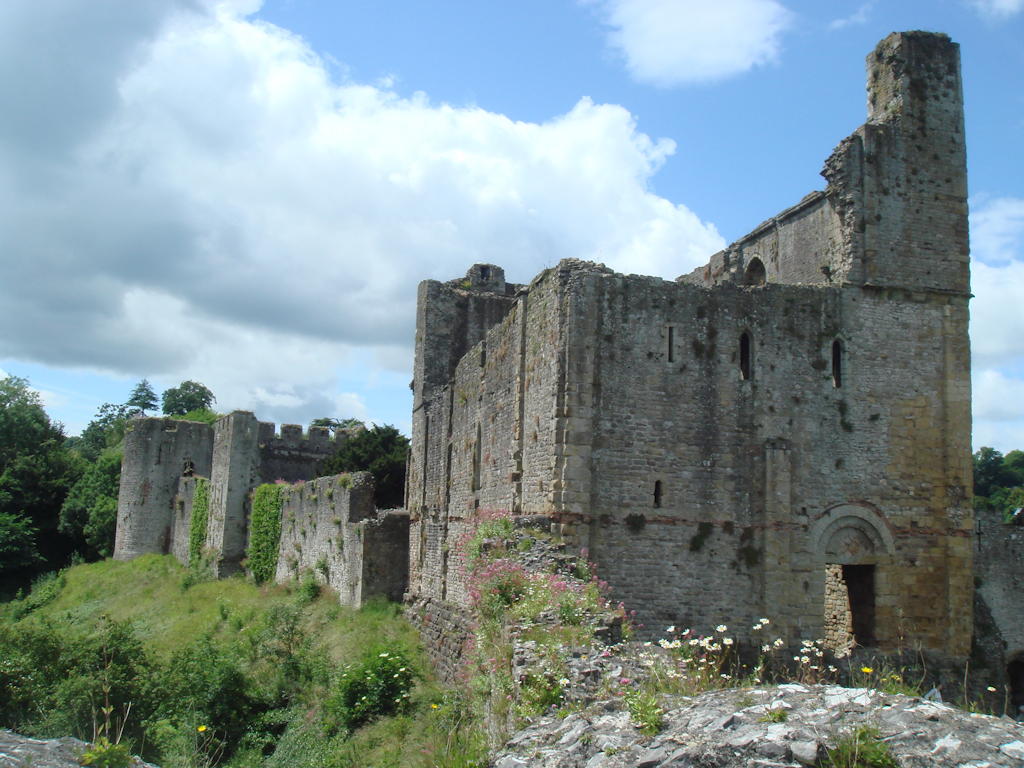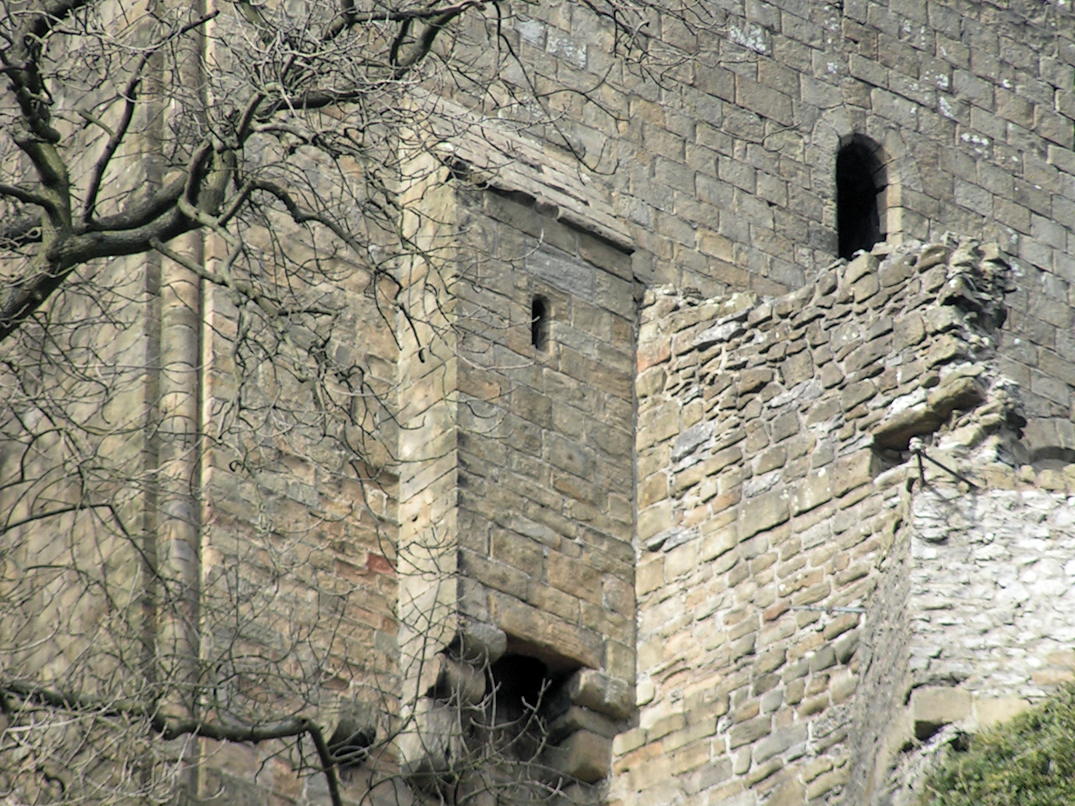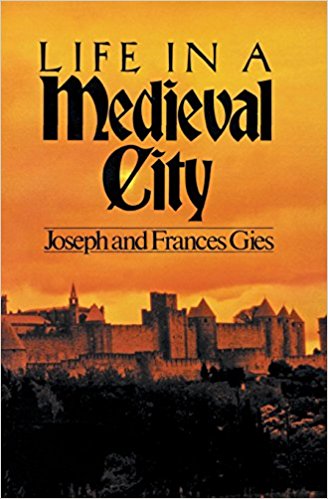Life in a Medieval Castle
Joseph & Frances Gies’s• Life in a Medieval Castle• is a nice little 272-page book1 covering:
- The Castle Comes to England
- The Lord of the Castle
- The Castle as a House
- The Lady
- The Household
- A Day in the Castle
- Hunting as a Way of Life
- The Villagers
- The Making of a Knight
- The Castle at War
- The Castle Year
- The Decline of the Castle
There’s also a short glossary of castle terms, a short glossary of feudal terms, a geographical guide to “Great Medieval Castles”, and a fairly lengthy bibliography.
Some of the interesting things I’ve learned are that castles often had entrances only on the second floor: the easiest way to keep attackers from bursting the front door is to not have one. The first floor would be used for storage, with, potentially, small slits for combat.
If the climate includes cold weather, there is likely to be a fireplace somewhere near the living quarters set into thick stone so that the stone retains warmth after the fire burns low.
Besides a well or other water source nearby, there might be a cistern on an upper level, with pipes leading down to provide lower levels with easy access to water—that sounds like a fun thing to add to an abandoned dungeon.
Also, castles were too big for an outhouse, so they had garderobe’s built in, usually nestled in a buttress at the end of a short passage, or corbeled out over a moat or river or a long shaft to the ground.
Two of the more interesting chapters are the ones on the villagers around the castle, and the year in castle life.
A peasant’s possessions consisted of three or four benches and stools, a trestle table, a chest, one or two iron or brass pots, a little pottery ware, wooden bowls, cups, and spoons, linen towels, wool blankets, iron tools, and, most important, his livestock. A reasonably prosperous villager owned hens and geese, a few skinny half-wild razor-backed hogs, a cow or even two, perhaps a couple of sheep, and his pair of plow oxen.
They also talk about the villein (the non-free villager, or serf, though “the term was less common in England”) who owed two or three days of labor a week to their lord, and who “could not leave his land or sell his livestock without permission”.
There were also the free tenants, who did not owe labor:
Some simply held their land free of most labor services, owing money rents and “suit,” meaning attendance at certain courts. Others were the skilled craftsmen: the miller, the smith, the carpenter, the weaver, the tanner, the shoemaker. Most prosperous among these, and least popular, was the miller, who paid the lord for the right to operate the mill, a strictly enforced monopoly. The villagers brought their grain there, contributing in payment the multure, a sixteenth to a twenty-fourth part of the grain. Since the millers did the measuring, they naturally fell under suspicion of cheating on weight… A few villagers secretly ground their grain with a hand-mill at home, but ran the risk of seizure and punishment.
The chapter on the castle’s year covers the seasons, which are somewhat different than ours:
- Winter was September 29, Michaelmas, to Christmas. Wheat and rye were sown during this period.
- Spring crops were sown between end of the Christmas holidays and Easter: oats, peas, beans, barley, vetches2.
- Summer lasted from the end of Easter week to Lammas, August 1.
- And Autumn was the harvest, from Lammas to Michaelmas again.
Michaelmas was also the beginning of the castle’s fiscal year.
The three major holidays were Christmas, Easter, and Pentecost. They began with a feast of the Church, followed by a week of vacation (two weeks for Christmas), and ended with a feast of the people before resuming work. There were quite a few lesser feast days and vacation weeks as well.
The castle died less from the technology of gunpowder than from the rise of central governments and their foot soldiers, and the rise of leisure among the nobility, who preferred living in residential manors than damp hard castles.
A single knight might still be more effective on the battlefield than a foot soldier without armor and with a clumsy arquebus, but he was less valuable than ten such, and more expensive. The same sort of economics applied to castle building, with the added factor that the new political geography made obsolete many of the old frontier castles, such as those guarding the long-embattled English-Welsh and Norman-Breton-French borders.
There are small bits of black and white period art and black and white photos throughout the book. A lot of it is Chepstow Castle in Wales, as are many of the quotes about the economics and running of the castle. It was a very interesting read, a blending of popular book and light scholarly work.
- April 15, 2017: Life in a Medieval City
-
Joseph and Francis Gies’s “Life in a Medieval…” series is a useful series for gamers. I’ve just finished reading Life in a Medieval City• and it provides details that should inspire ideas both for characters and for creating adventures.
The Medieval City of the title is, basically, Troyes, around the year 1250, in what was then only sort of France. The king of France didn’t control the Champagne area; the Count of Champagne ruled over the Province of Champagne, and Troyes was its capital.1 Nor was it the only area not under the control of the King, and Champagne itself was potentially under several jurisdictions.
The sovereign who granted Troyes its charter was Thibaut IV, whose talent as a poet won him the dashing sobriquet of Thibaut le Chansonnier (“Songwriter”). Even before he inherited the kingdom of Navarre (after which he signed himself Thibaut, king of Navarre and Champagne), his territories were extensive, though held from seven different lords—the king of France, the emperor of Germany, the archbishops of Sens and Reims, the bishops of Paris and Lancers, and the duke of Burgundy. For administrative purposes, the complex territory of Champagne was divided into twenty-seven castellanies, each of which included several barons and a number of knights who owed military service—altogether more than two thousand. (There were also a few hundred knights in Champagne who owed military service to somebody else.)
Language was fragmented as well. The literate used Latin as a common language—sometimes. The rest did as best they could with widely variant versions of French.
Because of the class structure, knowledge was also fragmented: all those strange things we read in medieval bestiaries, such as that “weasels conceive by the ear and deliver by the mouth” were there because the people writing the encyclopedias copied from (possibly misunderstood) Roman sources, rather than consulting the “Furriers, trappers, hunters, and poachers [who] could correct much of the natural history in the encyclopedias.”
In a fantasy game, of course, scholars have a very good reason for not investigating monsters at the source: the monsters are real, and it’s dangerous to investigate them. Which could make for a lot of fun when the encyclopedias don’t match what the monsters actually do.
It’s actually 224 pages of reading—the rest is the glossary, bibliography, and index.
↑A legume, somewhat like a red lentil.
↑
- Chepstow Castle at Wikipedia
- “Chepstow Castle, located in Chepstow, Monmouthshire in Wales, on top of cliffs overlooking the River Wye, is the oldest surviving post-Roman stone fortification in Britain. Its construction was begun under the instruction of the Norman Lord William fitzOsbern, from 1067, and it was the southernmost of a chain of castles built along the English-Welsh border in the Welsh Marches.”
- Life in a Medieval Castle•: Joseph Gies and Frances Gies (paperback)
- “Castles are crumbly and romantic. They still hint at an age more colorful and gallant than our own, but are often debunked by boring people who like to run on about drafts and grumble that the latrines did not work. Joseph and Frances Gies offer a book that helps set the record straight—and keeps the romance too.”
More Middle Ages
- Life in a Medieval City
- This book is a nice, breezy overview of life in a fair city, the kind of fair that figures prominently in many fantasy campaigns.



